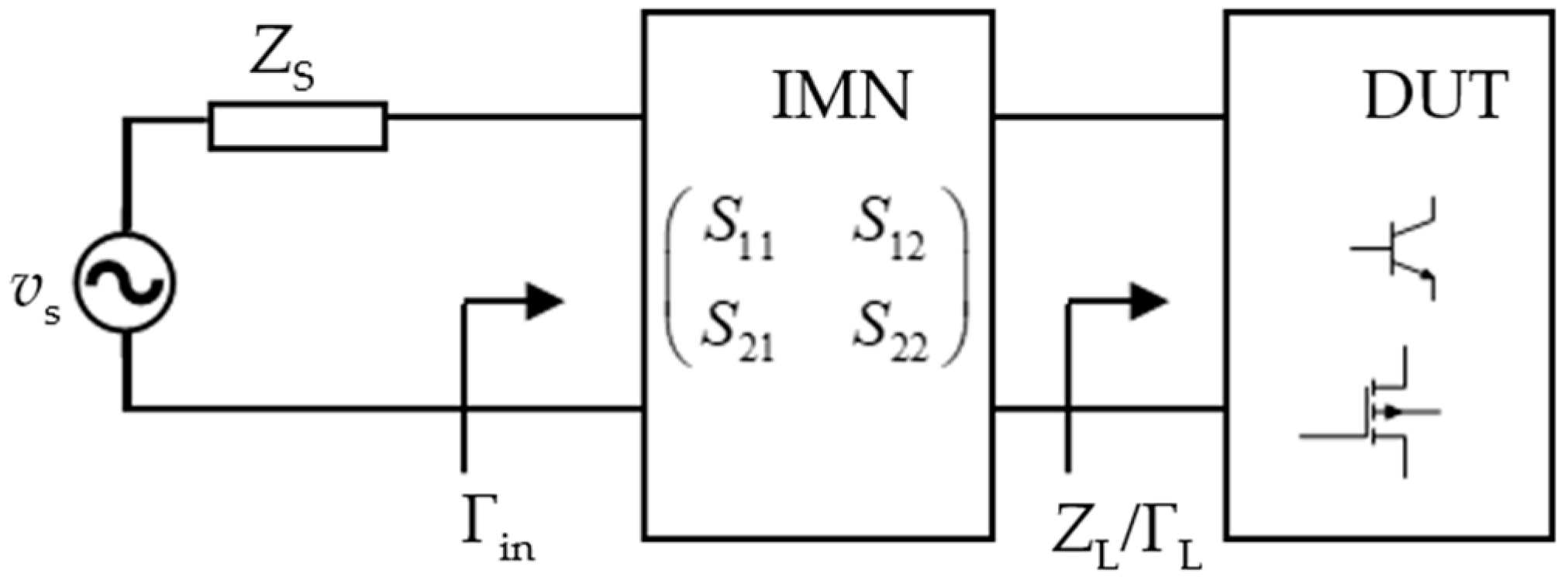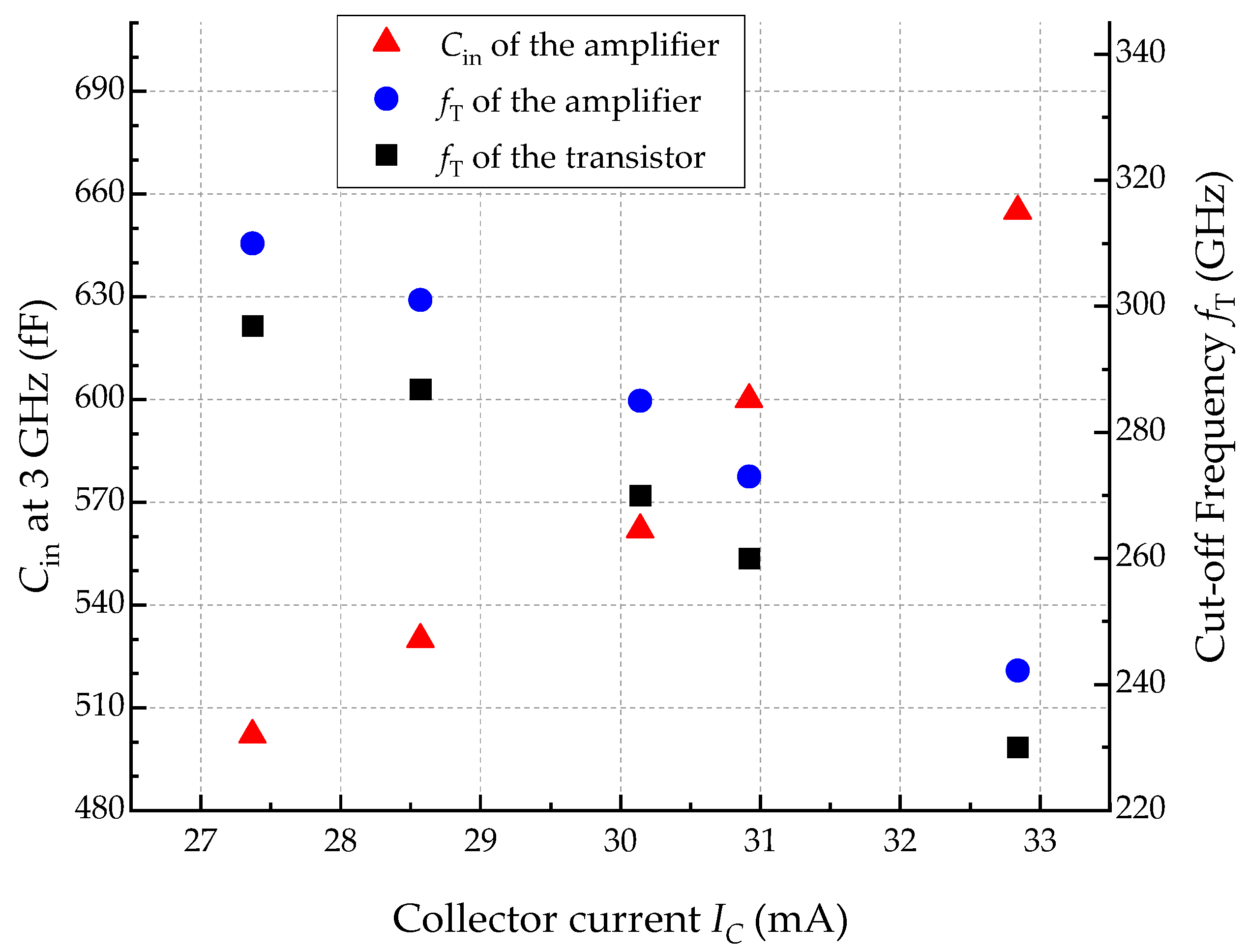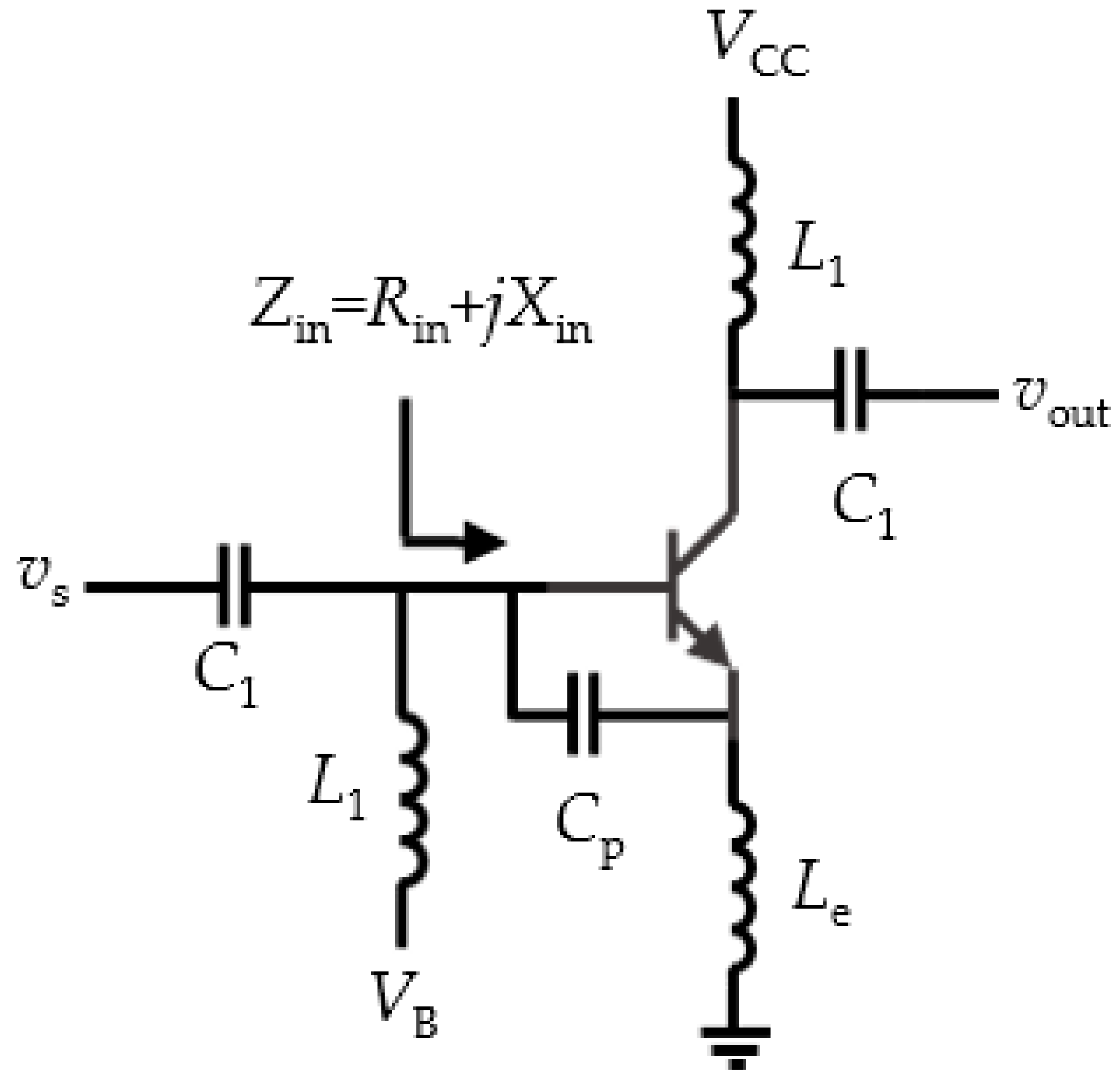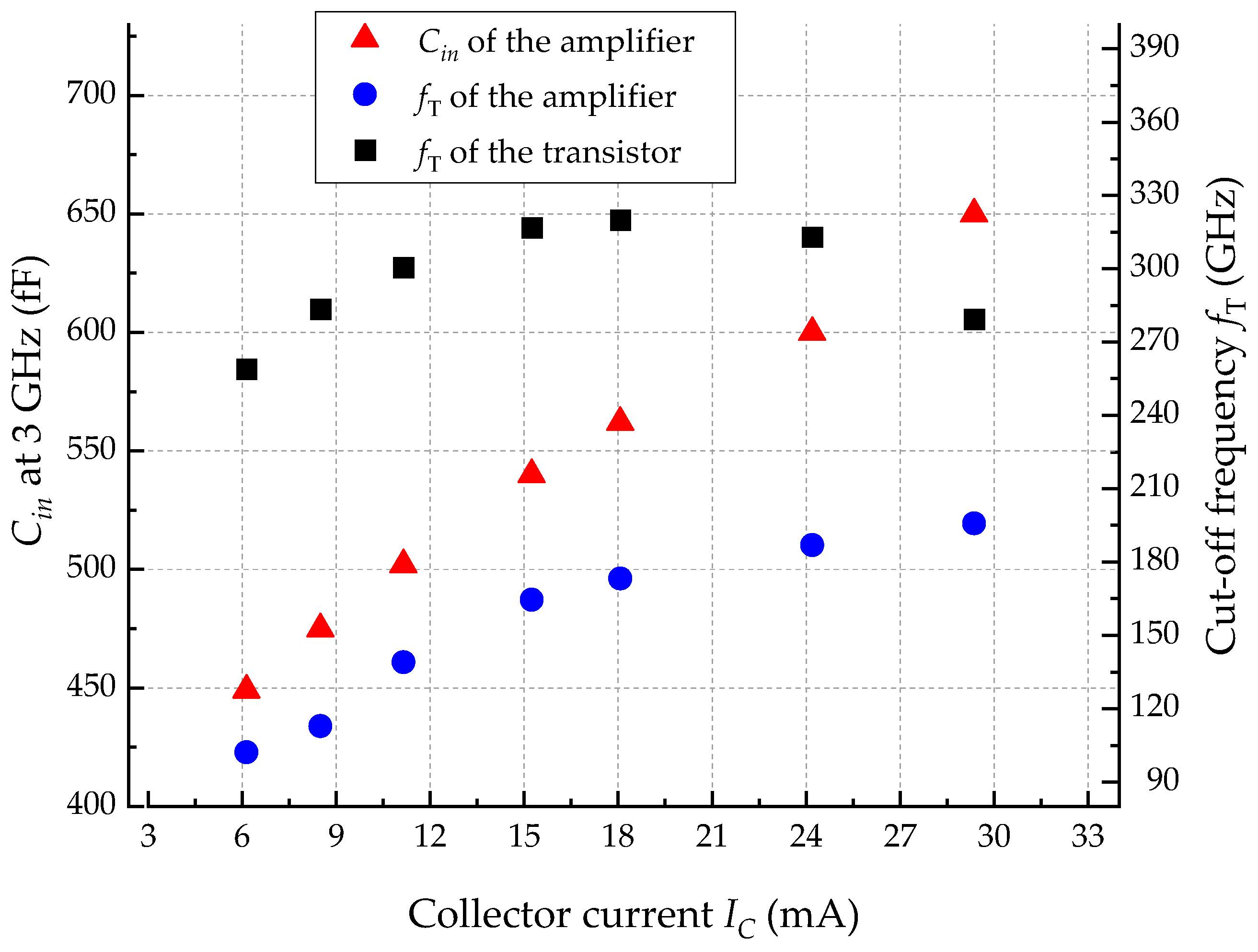Design of Impedance Matching Network for Low-Power, Ultra-Wideband Applications
Abstract
:1. Introduction
2. Simplified Real Frequency Technique (SRFT)
3. Results and Discussion
3.1. Comparing SRFT and Chebyshev Filter-Based Solutions
3.2. IMN for Low-Power Applications
4. Conclusions
Author Contributions
Funding
Data Availability Statement
Conflicts of Interest
References
- Fontana, R.J. Recent system applications of short-pulse ultra-wideband (UWB) technology. IEEE Trans. Microw. Theory Tech. 2004, 52, 2087–2104. [Google Scholar] [CrossRef]
- Yarman, B.S. Real frequency techniques a historical review. In Design of Ultra Wideband Antenna Matching Networks; Yarman, B.S., Ed.; Springer Science + Business Media B. V.: Dordrecht, The Netherlands, 2008; pp. 1–8. [Google Scholar]
- Fano, F.M. Theoretical limitations on the broadband matching of arbitrary impedances. J. Frankl. Inst. 1950, 249, 57–83. [Google Scholar] [CrossRef]
- Youla, D.C. A new theory of broadband matching. IEEE Trans. Circuit Theory 1964, 11, 30–50. [Google Scholar] [CrossRef]
- Carlin, H.J. A new approach to gain-bandwidth problems. IEEE Trans. Circuits Syst. 1977, 24, 170–175. [Google Scholar] [CrossRef]
- Carlin, H.J.; Amstutz, P. On optimum broadband matching. IEEE Trans. Circuits Syst. 1981, 28, 401–405. [Google Scholar] [CrossRef]
- Breed, G. Improving the Bandwidth of Simple Matching Networks; Summit Technical Media, LLC: Bedford, NH, USA, 2008; pp. 56–60. [Google Scholar]
- Yang, H.; Kim, K. Ultra-wideband impedance matching technique for resistively loaded vee dipole antenna. IEEE Trans. Antennas Propagat. 2013, 66, 5788–5792. [Google Scholar] [CrossRef]
- Bevilacqua, A.; Niknejad, A.M. An ultrawideband CMOS low-noise amplifier for 3.1–10.6-GHz wireless receivers. IEEE J. Solid-State Circuits 2004, 39, 2259–2268. [Google Scholar] [CrossRef]
- Ismail, A.; Abidi, A.A. A 3–10-GHz low-noise amplifier with wideband LC-ladder matching network. IEEE J. Solid-State Circuits 2004, 39, 2269–2277. [Google Scholar] [CrossRef]
- Zhao, C.; Duan, D.; Xiong, Y.; Liu, H.; Yu, Y.; Wu, Y.; Kang, K. A K-/Ka-band broadband low-noise amplifier based on the multiple resonant frequency technique. IEEE Trans. Circuits Syst. I 2022, 69, 3202–3211. [Google Scholar] [CrossRef]
- Zailer, E.; Belostotski, L.; Plume, R. Wideband LNA noise matching. IEEE J. Solid-State Circuits Lett. 2020, 3, 62–65. [Google Scholar] [CrossRef]
- Carlin, H.J.; Yarman, B.S. The double matching problem: Analytic and real frequency solutions. IEEE Trans. Circuits Syst. 1983, 30, 15–28. [Google Scholar] [CrossRef]
- Fettweis, A. Parametric representation of Brune functions. Int. J. Circuit Theory Appl. 1979, 7, 113–119. [Google Scholar] [CrossRef]
- Yarman, B.S.; Carlin, H.J. A simplified “real frequency” technique applied to broad-band multistage microwave amplifiers. IEEE Trans. Microw. Theory Tech. 1982, 30, 2216–2222. [Google Scholar] [CrossRef]
- Carlin, H.J.; Civalleri, P. On flat gain with frequency-dependent terminations. IEEE Trans. Circuits Syst. 1985, 32, 827–839. [Google Scholar] [CrossRef]
- Jarry, P.; Beneat, J.N. Microwave Amplifier and Active Circuit Design Using the Real Frequency Technique; John Wiley & Sons, Inc.: Hoboken, NJ, USA, 2016. [Google Scholar]
- Wu, D.Y.-T.; Mkadem, F.; Boumaiza, S. Design of a Broadband and Highly Efficient 45W GaN Power Amplifier via Simplified Real Frequency Technique. In Proceedings of the IEEE MTT-S International Microwave Symposium, Anaheim, CA, USA, 23–28 May 2010. [Google Scholar]
- Carlin, H.J. The scattering matrix in network theory. IRE Trans. Circuit Theory 1956, 3, 88–97. [Google Scholar] [CrossRef]
- Limand, J.S.; Park, D.C. A modified Chebyshev bandpass filter with attenuation poles in the stopband. IEEE Trans. Microw. Theory Tech. 1997, 45, 898–904. [Google Scholar]
- Yeung, L.K.; Wu, K.-L. A compact second-order LTCC bandpass filter with two finite transmission zeros. IEEE Trans. Microw. Theory Tech. 2003, 51, 337–341. [Google Scholar] [CrossRef]
- Yarman, B.S.; Fettweis, A. Computer-aided double matching via parametric representation of Brune functions. IEEE Trans. CAS 1990, 37, 212–222. [Google Scholar] [CrossRef]
- Bode, H.W. Network Analysis and Feedback Amplifier Design; D. Van Nostrand Co., Ltd.: New York, NY, USA, 1945; pp. 350–371. [Google Scholar]
- Steer, M. Microwave and RF Design Networks, 3rd ed.; NC State University: Raleigh, NC, USA, 2019. [Google Scholar]
- Matthaei, G.; Young, L.; Jones, E.M.T. Microwaves Filters, Impedance-Matching Networks, and Coupling Structures; McGraw-Hill: New York, NY, USA, 1985. [Google Scholar]
- Dai, Z.; He, S.; You, F.; Peng, J.; Chen, P.; Dong, L. A new distributed parameter broadband matching method for power amplifier via real frequency technique. IEEE Trans. Microw. Theory Tech. 2015, 63, 449–458. [Google Scholar] [CrossRef]
- Lera, G.; Pinzolas, M. Neighborhood based Levenberg–Marquardt algorithm for neural network training. IEEE Trans. Neural Netw. 2002, 13, 1200–1203. [Google Scholar] [CrossRef]
- Sengül, M. Design of practical broadband matching networks with lumped elements. IEEE Trans. Circuits Syst. II 2013, 60, 552–556. [Google Scholar] [CrossRef]
- Temes, G.C.; Lapatra, J.W. Introduction to Circuit Synthesis and Design; McGraw-Hill: New York, NY, USA, 1977. [Google Scholar]
- Köprü, R. FSRFT—Fast simplified real frequency technique via selective target data approach for broadband double matching. IEEE Trans. Circuits Syst. II Express Briefs 2017, 64, 141–145. [Google Scholar]
- Yegin, K.; Martin, A.Q. On the design of broadband loaded wire antennas using the simplified real frequency technique and a genetic algorithm. IEEE Trans. Antennas Propagat. 2003, 51, 220–228. [Google Scholar] [CrossRef]
- Gerkis, A.N. Broadband impedance matching using the real frequency network synthesis technique. Appl. Microw. Wirel. 1998, 10, 26–36. [Google Scholar]
- Bellomo, A.F. Gain and noise considerations in RF feedback amplifier. IEEE J. Solid-State Circuits 1968, 3, 290–294. [Google Scholar] [CrossRef]
- Meyer, R.G.; Mack, W.D. A 1-GHz BiCMOS RF front-end IC. IEEE J. Solid-State Circuits 1994, 29, 350–355. [Google Scholar] [CrossRef]
- Shaeffer, D.K.; Lee, T.H. A 1.5-V, 1.5-GHz CMOS low noise amplifier. IEEE J. Solid-State Circuits 1997, 32, 745–759. [Google Scholar] [CrossRef]









| Cin (fF) | 655 | 600 | 562 | 540 | 502 | 475 | 449 | |
|---|---|---|---|---|---|---|---|---|
| Parameter | ||||||||
| VB (mV) | 923 | 910 | 894 | 886 | 873 | 863 | 852 | |
| IC (mA) | 29.3 | 24.2 | 18.0 | 15.2 | 11.1 | 8.5 | 6.1 | |
| Le (pH) | 60 | 60 | 75 | 80 | 90 | 110 | 140 | |
| Cp (fF) | 100 | 140 | 180 | 195 | 210 | 220 | 230 | |
| C11 (pF) | 1.01 | 0.92 | 0.92 | 0.87 | 0.93 | 0.79 | 0.79 | |
| L12 (nH) | 2.09 | 2.2 | 2.23 | 2.17 | 2.18 | 2.25 | 2.56 | |
| C12 (fF) | 180 | 111 | 158 | 134 | 140 | 116 | 61 | |
| L22 (nH) | 1.02 | 0.91 | 1.15 | 1.11 | 1.17 | 1.25 | 1.21 | |
| ICmin (mA) | 25 | 21.46 | 15.9 | 13.42 | 10.85 | 8.5 | 6.1 | |
| ICmax (mA) | 34.5 | 30.5 | 24.2 | 22.7 | 17.7 | 10.8 | 11.4 | |
Disclaimer/Publisher’s Note: The statements, opinions and data contained in all publications are solely those of the individual author(s) and contributor(s) and not of MDPI and/or the editor(s). MDPI and/or the editor(s) disclaim responsibility for any injury to people or property resulting from any ideas, methods, instructions or products referred to in the content. |
© 2024 by the authors. Licensee MDPI, Basel, Switzerland. This article is an open access article distributed under the terms and conditions of the Creative Commons Attribution (CC BY) license (https://creativecommons.org/licenses/by/4.0/).
Share and Cite
Hassani, S.; Chen, C.-H.; Nikolova, N.K. Design of Impedance Matching Network for Low-Power, Ultra-Wideband Applications. J. Low Power Electron. Appl. 2024, 14, 16. https://doi.org/10.3390/jlpea14010016
Hassani S, Chen C-H, Nikolova NK. Design of Impedance Matching Network for Low-Power, Ultra-Wideband Applications. Journal of Low Power Electronics and Applications. 2024; 14(1):16. https://doi.org/10.3390/jlpea14010016
Chicago/Turabian StyleHassani, Sepideh, Chih-Hung Chen, and Natalia K. Nikolova. 2024. "Design of Impedance Matching Network for Low-Power, Ultra-Wideband Applications" Journal of Low Power Electronics and Applications 14, no. 1: 16. https://doi.org/10.3390/jlpea14010016
APA StyleHassani, S., Chen, C.-H., & Nikolova, N. K. (2024). Design of Impedance Matching Network for Low-Power, Ultra-Wideband Applications. Journal of Low Power Electronics and Applications, 14(1), 16. https://doi.org/10.3390/jlpea14010016







